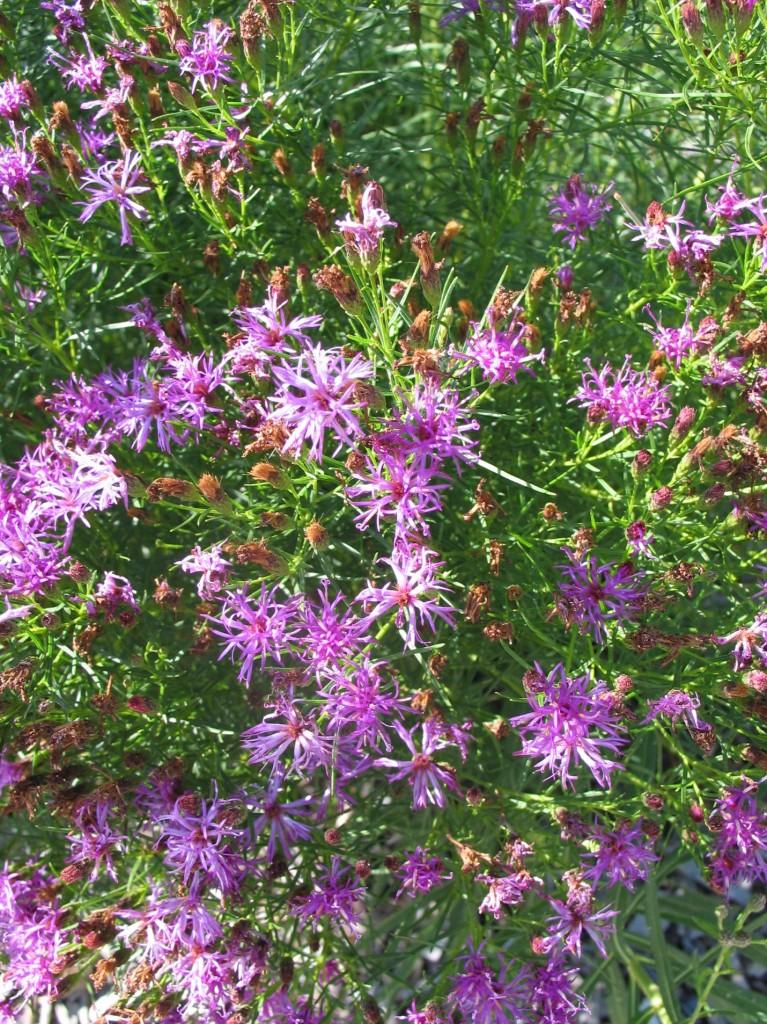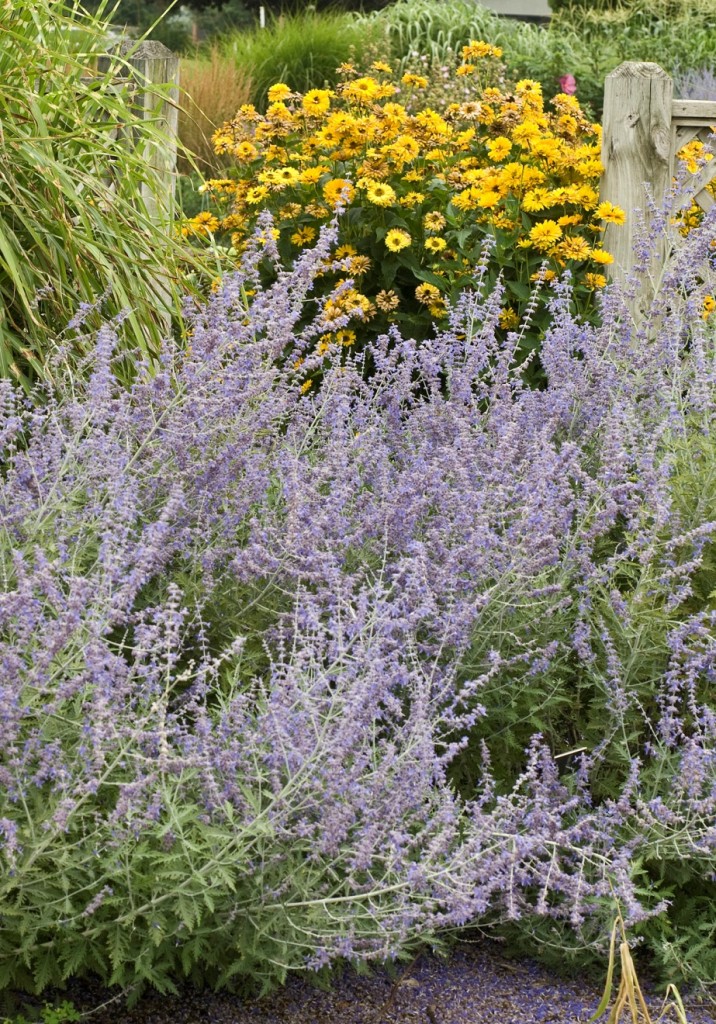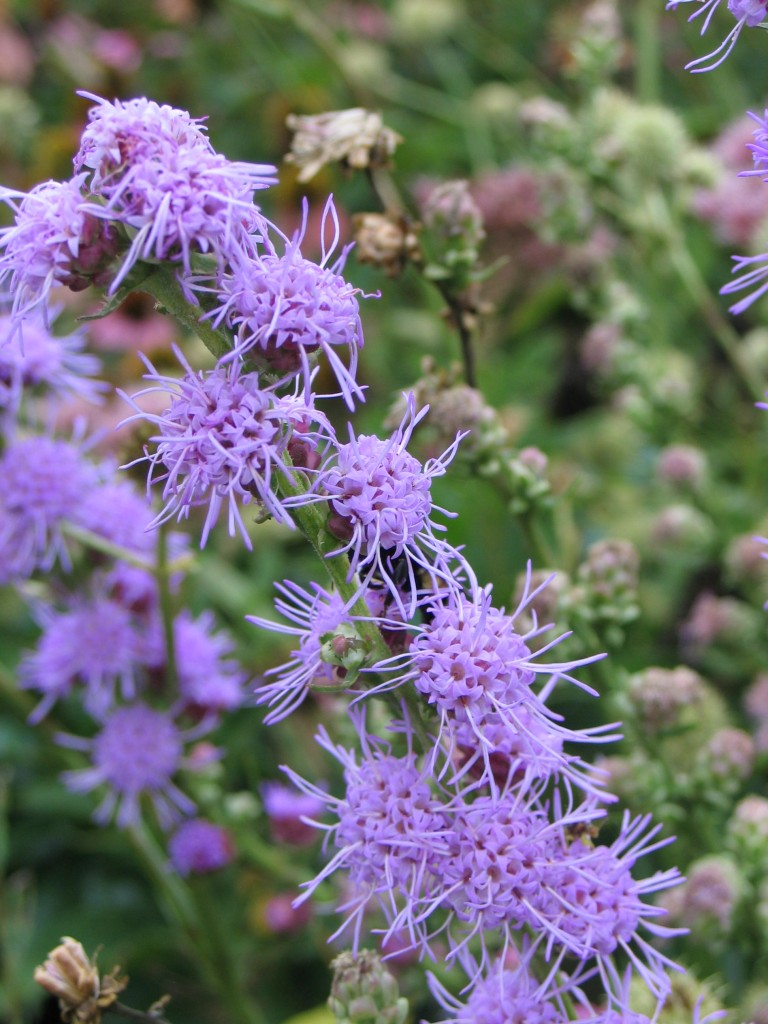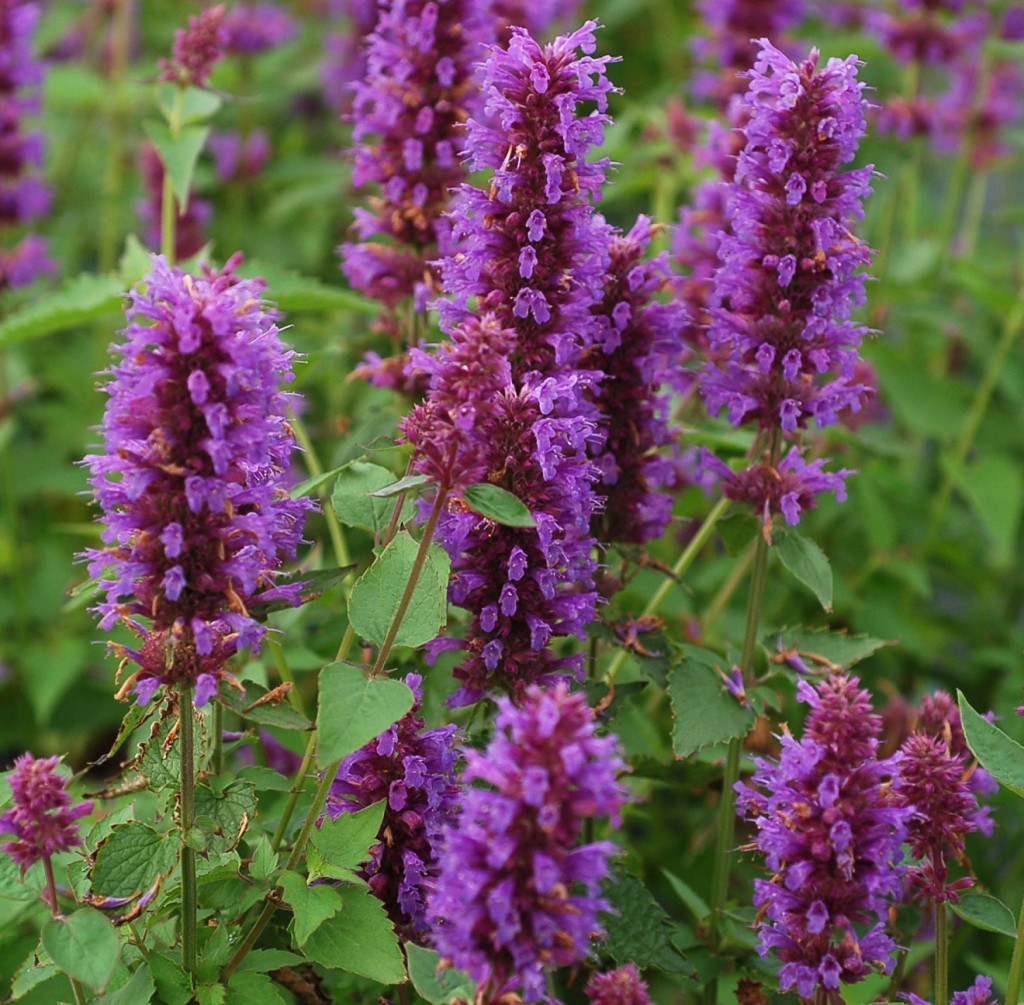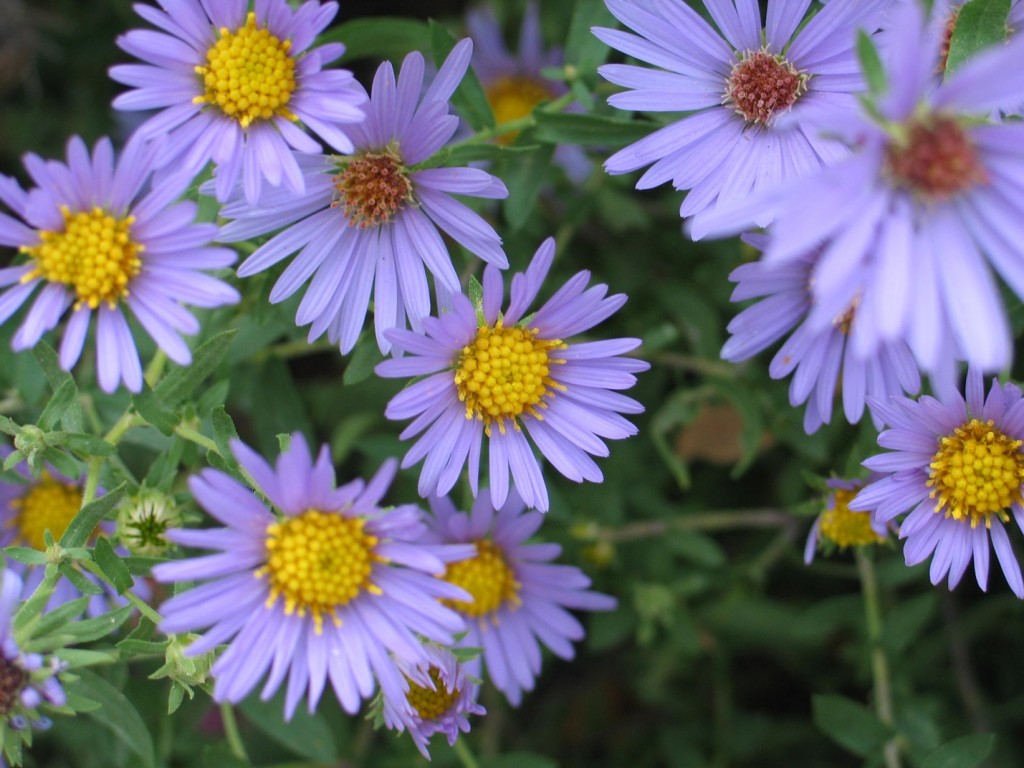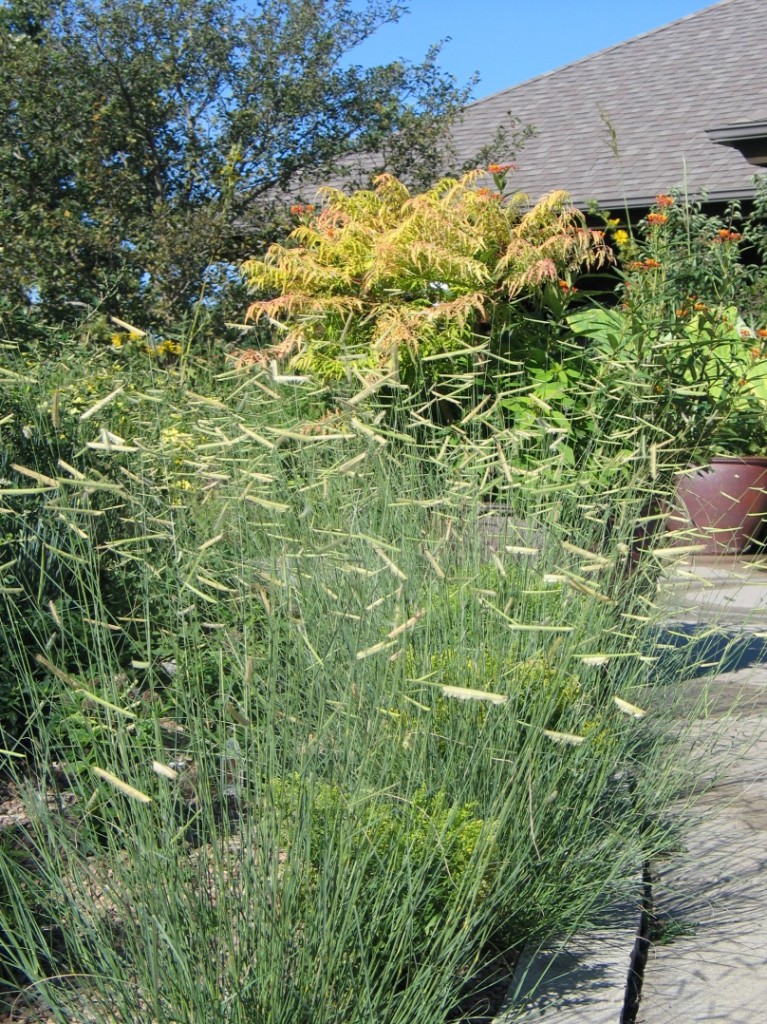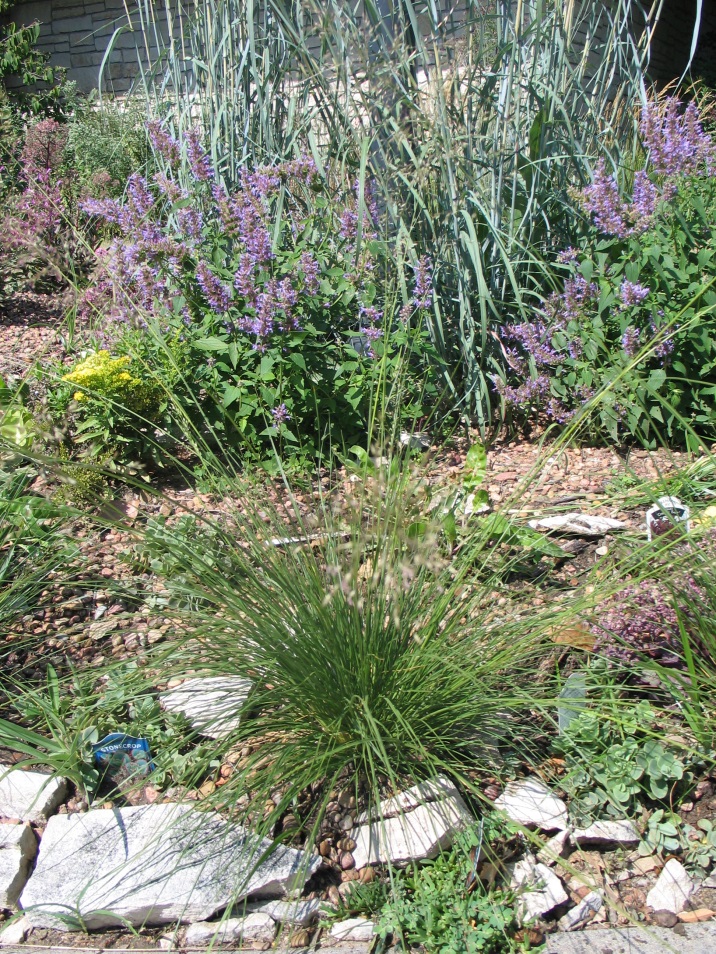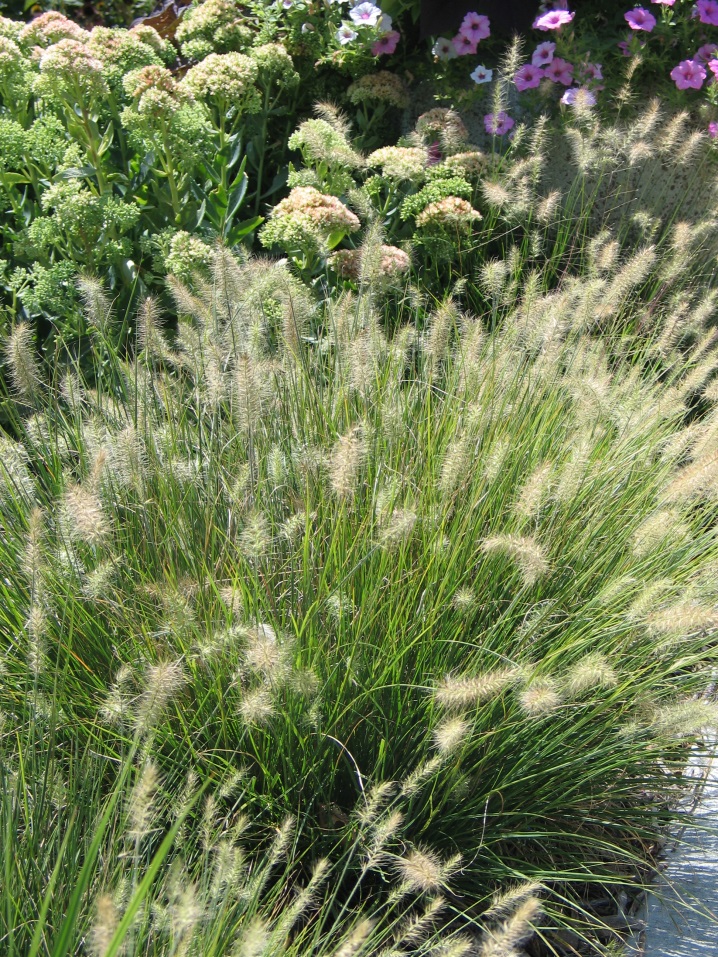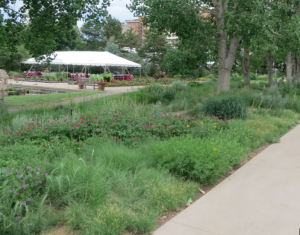Lately, I have been watching old Western films. John Wayne always looks so calm and collected. He never sweats, even though he is wearing five layers of clothing. Have you ever wondered why they wear so much when it is so hot?
Right now, I wish I had a sprinkler to run through or a bucket of ice water to dump on myself. Those movie characters who ride through the desert unscathed remind me of some tough plants blooming right now in the arboretum. It is a true testament to the toughness of some perennials that thrive in adverse conditions.
Try these sun-loving perennials – you will be rewarded year after year by these resilient plants:
Letterman’s Ironplant-Vernonia lettermanii ‘Iron Butterfly’
While walking through the gardens this morning, I noticed the vibrant purple blooms of this iron-clad wildflower. We should be tooting the horn for more natives like these. The plants were alive with activity-like a pollinator magnet! Each stem has slender leaves radiating outward, similar to Amsonia hubrichtii. This is a more refined ironweed, but just as tenacious as the pasture type. I use them in groupings with switch grass and goldenrods but they would be a nice addition to any landscape.
Russian Sage-Perovskia atriplicifolia
On my recent trip to Denver, Russian Sage was ubiquitous. That’s a fancy word for everywhere. It was in the street medians, parks, store fronts, and in front of most homes, but for good reason. The soft lavender blooms are eye-catching. The cloud of colorful flowers above the finely textured aromatic foliage is a wonderful combination. Did I mention that Russian Sage is tough? It shines in any full to part sun location. It can survive drought conditions, but appreciates weekly watering. They are best displayed in mass plantings or with native grasses.
Button Blazing Star-Liatris aspera
Blazing stars have put on quite a show this year and button blazing star is no exception. It is in full bloom right now in 100 degree heat and loving it. The entire plant matures to 3′ in height, but the real show is the purple button flowers that develop along the stem. It is happiest in medium to dry soil conditions and will become unhappy with too much moisture. Pollinators flock to it, including butterflies, hummingbirds, and bees. Plant them in mass, 8-12 inches apart for the ultimate display. I like to integrate several grasses like Little Bluestem or switch grass to give interest later in the season.
Hummingbird Mint- Agastache ‘Blue Boa’
This plant has been one of my biggest surprises over the last several years. It is almost always in bloom. It loves the heat and humidity. The deep violet-blue blooms lure many different pollinators and ‘Blue boa’ requires very little care once established in a medium to dry location. If you want to help the pollinators, try a few in your landscape. You will be surprised by them, too.
Aromatic Aster-Aster oblongifolius ‘October Skies’
We have been growing this great form of our native aromatic aster for several years. It is not rambunctious in the landscape. In fact, it develops into a nice bush that is covered with glowing lavender flowers. When the whole plant is in bloom it looks like a mum on steroids. Flowers begin to open in late September and last into October. During the warm days of autumn, pollinators congregate on these beauties, seeking to collect the last pollen of the season. We have used them in borders and native groupings with ornamental grasses.
Notice the theme? They all have lavender blooms. These are a few plants that are doing well in the arboretum. What plants have you had success with this year?

